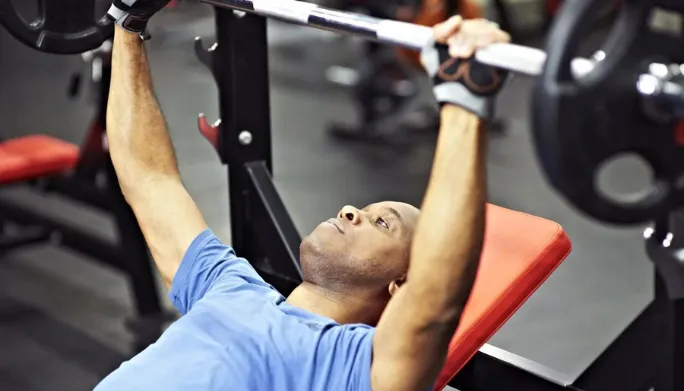In our fast-paced, technology-driven world 🌐, where sedentary habits have become the norm, the imperative of movement stands out as a beacon for holistic health. Beyond being a mere physical activity, movement represents an integral aspect of human existence, influencing our bodily fitness, mental acuity, emotional resilience, and long-term disease prevention. In this comprehensive analysis, we embark on a journey through the myriad layers of why movement is not just beneficial but fundamentally crucial for human well-being. 🚶♀️🧠💪
Physical Health Benefits 💓
Cardiovascular Health ❤️
The benefits of movement on cardiovascular health extend beyond the mechanical pumping of blood. Regular cardiovascular exercise induces a cascade of physiological responses. When challenged through activities like running or swimming, the heart adapts by becoming more efficient, pumping more blood per beat. This increased efficiency reduces the workload on the heart and decreases the risk of cardiovascular diseases such as heart attacks and strokes. Furthermore, the dilation of blood vessels during exercise enhances blood flow, promoting the delivery of oxygen and nutrients to every part of the body. ❤️🏃♂️🩸

Weight Management ⚖️
Movement is an intricate dance in the realm of weight management. Beyond the caloric burn during exercise, physical activity plays a crucial role in shaping body composition. Regular movement, especially a combination of cardiovascular exercise and strength training, burns calories and builds lean muscle mass. Muscle tissue is metabolically active, contributing to a higher basal metabolic rate and facilitating ongoing calorie expenditure even at rest. This intricate interplay makes movement a tool for weight loss and a catalyst for sustainable weight management. 🏋️♀️⚖️💪
Muscle and Bone Strength 💪🦴
The benefits of movement on muscle and bone health are a testament to the body’s adaptability. Engaging in resistance training induces microscopic damage to muscle fibers, prompting the body to repair and strengthen them. This process leads to increased muscle mass and fortifies the connective tissues, promoting joint health. Simultaneously, weight-bearing exercises stimulate bone growth and density, which is vital for preventing fractures and maintaining skeletal integrity. The symbiotic relationship between muscle and bone health makes movement a cornerstone of physical strength and resilience. 💪🦴🏋️♂️

Joint Flexibility and Mobility 🤸♀️
In the intricate machinery of the human body, joints serve as pivotal components. Movement, particularly in the form of flexibility and mobility exercises, keeps this machinery well-oiled. Yoga, Pilates, and dynamic stretching routines maintain joint flexibility, ensuring a full range of motion. The synovial fluid within joints, often called “joint oil,” relies on movement to circulate and nourish the cartilage. Consequently, consistent movement becomes a preventive measure against joint stiffness, promoting physical flexibility and joint longevity. 🤸♀️🔄🏃♂️
Mental Health Benefits 🧠
Stress Reduction 🏃♀️
The relationship between movement and stress reduction is an intricate dance between the physiological and psychological realms. Engaging in physical activity triggers the release of endorphins, the body’s natural stress relievers. Simultaneously, the rhythmic nature of many exercises, such as jogging or cycling, induces a state of focused attention, diverting the mind from stressors. Moreover, the post-exercise period offers a window of reduced cortisol levels, contributing to an overall sense of calm. This multifaceted approach positions movement as a potent antidote to the stressors of modern life. 🏃♀️🌬️😌
Improved Sleep 🌜
The intricate relationship between movement and sleep quality involves the delicate regulation of circadian rhythms and hormonal balances. Physical activity, especially when performed outdoors, helps synchronize the body’s internal clock with the natural day-night cycle. Additionally, exercise prompts the release of melatonin, a hormone crucial for inducing sleep. The synergistic effect of improved sleep architecture and sleep efficiency makes movement not just a daytime endeavor but a facilitator of restorative sleep. 🌜💤🚶♂️

Cognitive Function 🧠
The effects of movement on cognitive function extend beyond the immediate post-exercise clarity. Regular physical activity, especially aerobic exercise, stimulates the production of neurotrophic factors, compounds that support the growth and maintenance of neurons. This neuroplasticity, or the brain’s ability to adapt and reorganize, is foundational for learning, memory, and overall cognitive health. Furthermore, the increased blood flow during exercise delivers a surge of oxygen and nutrients to the brain, further enhancing cognitive performance. 🧠🏃♂️🌊
Mood Regulation 🤗
The relationship between movement and mood regulation is a symphony of neurotransmitters and hormones. Beyond the immediate release of endorphins, sustained physical activity leads to increased serotonin production, a neurotransmitter associated with mood stabilization. Dopamine, another neurotransmitter linked to pleasure and reward, is also released during movement, contributing to a sense of accomplishment and well-being. The holistic impact of movement on various neurotransmitter systems makes it a potent tool for maintaining emotional equilibrium. 🤗💃🌈
Social and Emotional Well-being 🤝
Social Connection 🌍
The communal aspect of movement transforms it from a solitary endeavor into a social experience. Whether participating in team sports, group fitness classes, or community walks, shared physical activities foster a sense of camaraderie and connection. The bonds formed during these shared experiences contribute to emotional well-being and create a support system during challenging times. The social fabric woven through movement adds a layer of richness to the overall well-being equation. 🤝🌍🏀

Emotional Expression 💃
Movement serves as a canvas for emotional expression, allowing individuals to communicate feelings that words may fail to convey. Dance, for example, provides an outlet for joy, sorrow, and everything in between. This form of emotional expression transcends verbal communication, fostering a deeper connection with one’s emotions. The act of expressing emotions through movement not only enhances self-awareness but also contributes to emotional resilience. 💃😢🎭
Stress Coping Mechanism 🧘♂️
The movement stands as a tangible and constructive outlet for stress energy. Engaging in physical activities, whether structured exercises or recreational pursuits, allows individuals to channel stress into purposeful action. The rhythmic flow of movements in activities like yoga or dynamic exertion in a challenging workout provides a platform for releasing tension. This intentional release contributes to immediate stress relief and equips individuals with coping mechanisms for navigating life’s challenges. 🧘♂️🤸♂️💨
Long-term Health and Disease Prevention 💓🌱
Chronic Disease Prevention 💓
The role of movement in chronic disease prevention is akin to a proactive investment in health capital. Regular physical activity positively impacts metabolic health, reducing the risk of type 2 diabetes by improving insulin sensitivity. The influence on blood pressure regulation and cholesterol levels positions movement as a formidable force against cardiovascular diseases. The comprehensive effects on the body’s physiological systems make movement essential in preventing chronic diseases. 🌱💓🚴♂️
Improved Immune Function 🌐
The intricate relationship between movement and immune function involves a dance of cellular responses. Moderate, regular exercise enhances immune surveillance, promoting the circulation of immune cells throughout the body. Furthermore, physical activity helps regulate inflammatory processes, preventing the immune system from becoming hyperactive. This delicate balance contributes to overall immune resilience, reducing the susceptibility to infections and supporting the body’s defense mechanisms. 🌐🦠🤸♀️
Enhanced Longevity 🌟
Pursuing an active lifestyle transcends immediate health benefits, extending into the realm of longevity. The cumulative effects of improved cardiovascular health, reduced risk of chronic diseases, and enhanced mental well-being culminate in a longer and more fulfilling life. Adopting an active lifestyle today becomes an investment in a future characterized by vitality and a sustained capacity to engage with and enjoy life. 🌟🕰️🏞️

Movement emerges not only as a physical activity but as an intricate and dynamic tapestry woven into the fabric of our existence. Its influence extends beyond the superficial realms of fitness, reaching into the profound realms of mental acuity, emotional resilience, and long-term health. By recognizing and embracing the multifaceted benefits of movement, individuals embark on a journey towards health and a more enriched and fulfilling life. Movement becomes not merely a regimen but a celebration of what it means to be human—a harmonious synergy of body, mind, and spirit. 🎉🌈🚀


